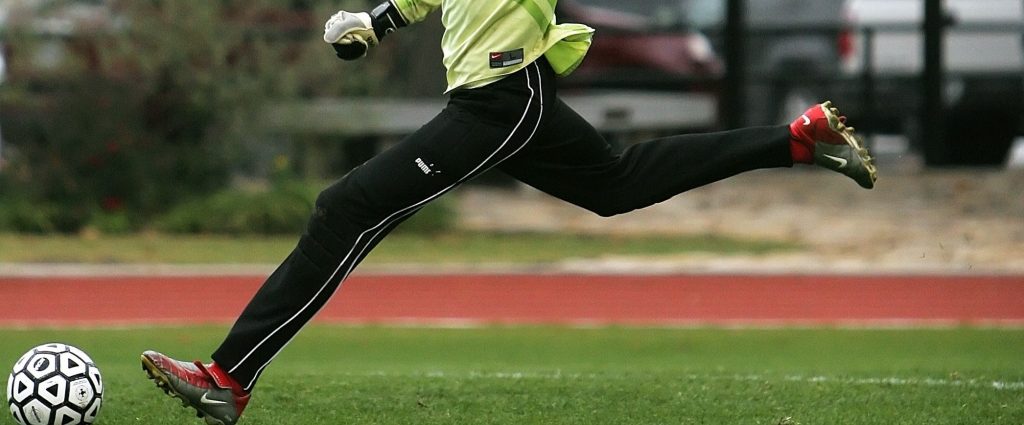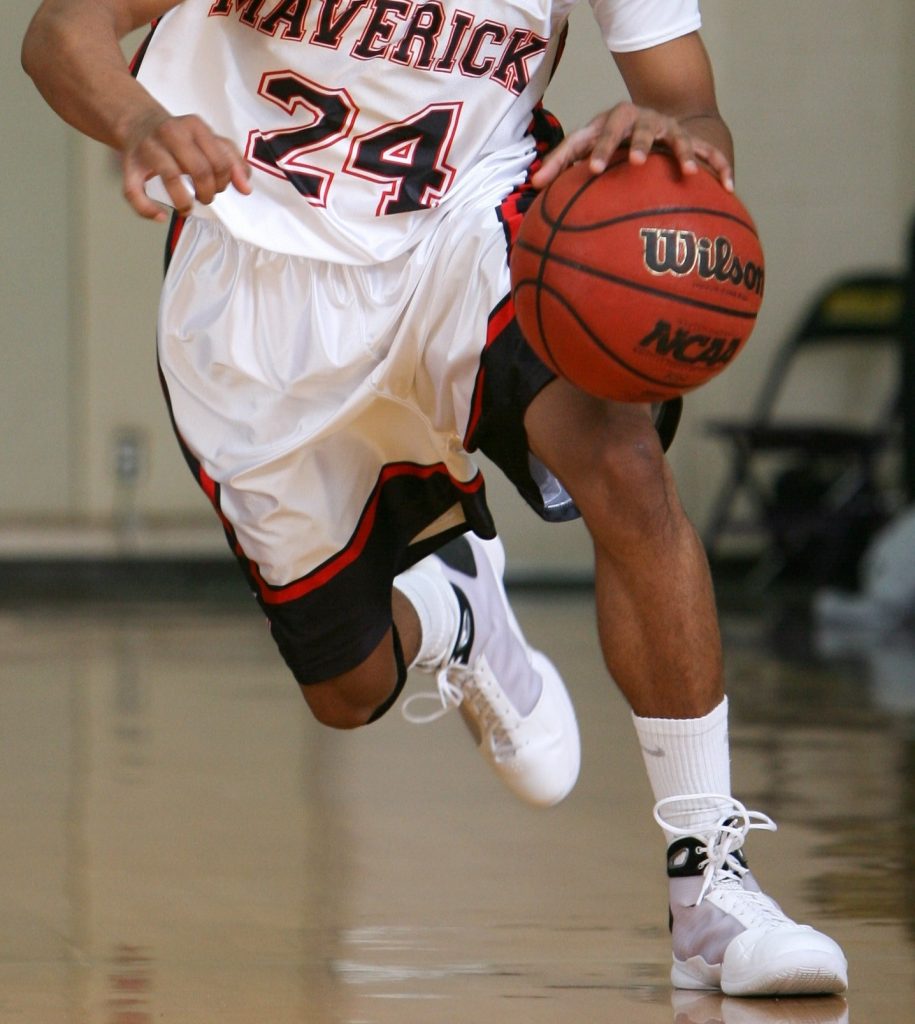
Hamstring muscle injuries are one of the most frequently occurring injuries in sports involving high-speed running. In professional soccer hamstring injuries account for 20–26% of all injuries, making them one of the most prevalent. Importantly, almost one-third of hamstring injuries have been reported to recur. Therefore, there is a big need to continue improving hamstring injury rehab and risk reduction strategies.
Hamstring injuries are most often sustained during sprinting, but also happen when slide tackling (overstretch), cutting (change of direction) and kicking. Multiple intrinsic risk factors have been established, some of which are unmodifiable including age and previous injury history. Possible modifiable intrinsic risk factors include the strength of the hamstring and surrounding lumbo-pelvic muscles, strength asymmetry, fatigue tolerance, muscle architecture, range of motion, lack or excess of high-speed sprinting, and running biomechanics. Therefore, the optimal strategy to manage and prevent hamstring injuries should be multi-factorial.
The hamstrings are located in the posterior (back) of the thigh and are categorised as being biarticular, which means they cross two joints (the hip and knee). The primary functions of the hamstring muscle group is to flex the knee and extend (straighten) the hip in the sagittal plane. In addition, although generally listed as an adductor, adductor magnus shares an attachment to the ischium and contributes to hip extension alongside the hamstrings.
Hamstring strains most often occur during maximal sprints. It is difficult to document exactly at what time during the running cycle injuries occur. However, since the net moment (force) developed by the hamstrings is thought to be maximal in the late swing phase, right before heel strike, this is thought to be the most vulnerable position. Muscle strains usually occur in the interface between the muscle and its tendon (the myotendinous junction), but avulsion injuries from the ischial tubercle on the pelvis are also seen.
Biceps femoris is the most frequently injured of the hamstrings across the literature. Biceps femoris injuries are commonly the result of high-speed running mechanisms, whereas stretch-type mechanisms as seen during kicking, are more likely to affect the medial (inner) hamstrings, particularly semimembranosus.
It is worth noting that although the common assumption is that running-based hamstring injuries occur during linear sprints, you will also see people injured after or during a change of direction. This is important from both the point of view of exposure to such stimuli in risk reduction work (to get the body used to to these situations), and in rehab (we must include multi-directional drills in our rehab, not just linear work). Hamstring muscle injuries do not always have obvious presentations where athletes just drop, sometimes they can look innocuous but see players out of action for several weeks.

It is worth noting that although the common assumption is that running-based hamstring injuries occur during linear sprints, you will also see people injured after or during a change of direction. This is important from both the point of view of exposure to such stimuli in risk reduction work (to get the body used to to these situations), and in rehab (we must include multi-directional drills in our rehab, not just linear work). Hamstring muscle injuries do not always have obvious presentations where athletes just drop, sometimes they can look innocuous but see players out of action for several weeks.
Physiotherapy rehabilitation of hamstring injuries requires your physiotherapist to complete a needs analysis for the demands of your sport. Ultimately, by breaking down a skill into its physiological components, this gives us a guide to what adaptations we are chasing (e.g. force production through either peak force and/or high rates of force development, tendon stiffness and efficient stretch shortening cycles etc). Once we have identified the adaptations our patient needs, we will identify the stimulus that provides this (e.g. slower contractions under heavy loads, or more rapid contractions under lighter loads etc.), and prescribe your exercise program that effectively delivers this stimulus.
First and foremost, your physiotherapist needs to consider tissue healing timescales. Ultimately, the physiological stages of healing all still need to occur, and this is partly why we need on-going exercise progression after players return to play. It is unlikely that a player who returns at around three weeks post-strain will have fully completed the tissue remodelling phase, based on conventional knowledge of soft-tissue healing processes. Therefore, although they are back in the game, their hamstring is not as resilient as it was pre-injury, and further strengthening is required. This topic should underpin the prognosis and rehabilitation for all injuries, not just hamstring strains.
Secondly, there is no one-size-fits-all approach to treatment of hamstring injuries. Research teams and clinicians alike are strong advocates of well-rounded and progressive programs that are tailored to the individual, their specific grade of injury, previous injury history, level of strength and conditioning, and the demands of their particular sport.
A comprehensive, multi-faceted approach is optimal for hamstring injury rehabilitation and prevention of future problems. This includes:
1 . Regular and graded exposure to high speed running. The muscle activity of the hamstrings in sprinting surpasses common hamstring strengthening exercises, which supports their use as a time-efficient means of training for performance and injury risk reduction simultaneously.
2 . Proper running mechanics, things like lumbopelvic control, anterior pelvic tilt and overstriding are just some of the things that need to be addressed in rehabilitation.
3 . Strengthening the hamstrings in a variety of ways depending on the performance goals or/and the mechanism of injury.
4 . Ensure training or rehabilitation is well programmed: avoid high speed running exposure on the same day after gym. Ensuring sprinting sessions are done before the gym or the next day. This is because sprinting after lower body gym work can increase the risk of hamstring strains as the lower limb muscles are fatigued.
5 . Do not ignore warning signs of extra tightness in the hamstrings than normal, especially if this tightness is on one side only.
The hamstring is most vulnerable to reinjury in the first 2-3 weeks of being back to full training. It is vital you have completed a well-structured return to run program that includes the required volume, agility and sprint exposure before returning to training. Once back to training it is sensible to continue to work with your physio to complete your strength and conditioning program and improve your hamstring resilience to reduce your risk of hamstring injury for the remainder for the season.
Orlagh Kearns, Physiotherapist

This article was written by Orlagh Kearns, one of our physiotherapy team. She has a Masters in Sports and Exercise Medicine as well as an Honours degree in Physiotherapy. She has extensive experience working with athletes and sporting clubs from elite through to recreational levels. This has predominantly been in field-based sports such as Gaelic football, Hurling and Rugby. She has a strong interest in long-term athletic development and injury prevention through integrating strength and conditioning into her rehab programs, and has a special interest in lower limb and running-related injuries.
Feel free to contact Orlagh for more information about hamstring injury treatment, return-to-sport rehab, and prevention of future hamstring injuries.

